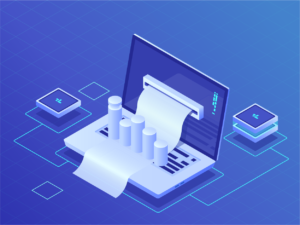DAVID GUSTIN, Chief Strategy Officer, The Interface Financial Group
December 18, 2018
In the past, most procurement organizations would admit to doing a generally poor job of linking buying processes to the actual receipt of invoices, the invoice approval process and the subsequent payment to suppliers.
There have been many reasons for this, not the least of which was limited coordination between “buying” systems, including vendors, people and processes, and the accounts payable function.
But in more recent years, corporations have moved to the cloud for document and data exchange around their source-to-pay processes, driven by factors including the rise of platform-based technologies that drive efficiency and effectiveness in the procurement and accounts payable areas as well as by government tax regulations in Europe and Latin America.
Business Case for E-Invoicing
The business case for e-invoicing has never been better. But there is still paper and PDFs and lots of it. Companies receive invoices from their supplier ecosystems via different methods, and the bulk of invoices are not electronic to electronic (i.e., EDI, XML, PO Flip). Many invoices still come in via PDF and paper, and require some form of machine recognition.
A typical corporation will have hundreds if not thousands of suppliers and will have multiple sources of vendor types, each with their own nuances:
-
- Merchandise or Direct Materials suppliers — a big component of spend, and many times suppliers are connected via EDI, XML or some other electronic link).
- Freight/Logistics — typically one of the largest categories of spend, and typically managed outside of accounts payable in Global Logistics or Supply Chain.
- Indirect Categories like Telecoms, IT, Legal, etc. that are big spend categories and typically have national contracts.
- Thousands of small indirect suppliers providing goods and services globally, which use the bulk of the paper and PDFs.
- Expenses with No Purchase Orders — smaller vendors, one-offs, P-card expenses, etc.
Now, new technology is enabling companies to capture data directly from paper and PDF invoices, even unstructured ones. The ability to extract data from unstructured invoice formats and use the data instantly for compliance, taxes, accounts payable, etc. becomes not only a huge labor savings for large enterprises, it’s also a game changer for invoice finance.
How machine learning changes game for early pay finance
When you use supply chain finance and integrate with a platform like Ariba or Taulia, invoices are automatically pushed and scheduled for payment via API. But off-platform invoices from suppliers — which represent the vast majority of their invoices — are not visible via a platform.
Off-platform funding means just what it implies — funding invoices that are not on some cloud-based supplier portal. Off-platform lending enables suppliers to access finance by providing a third-party lender invoices in any format; and through data extraction, the machine can automatically read all the data with 100% accuracy.
Now with machine learning, providing scanned documents and automatic extracting offers a way to make instant credit decisions for off-platform funding. This is true invoice finance as opposed to supply chain finance waiting for a buyer’s scheduled payment file.
Many P2P vendors are using optical character recognition (OCR) and intelligent models to analyze invoices, but it’s not 100% reliable. While there have been significant advances with systems capable of producing a high degree of recognition accuracy for a variety of digital image file format inputs, OCR accuracy is 80% or 85% at best when dealing with invoices. Some other vendors claim to have 100% invoice automation, but that is only after forcing a buyer’s suppliers to provide invoices in some structured invoice template. Good luck changing behaviors.
And here is where machine learning and invoices make for an interesting invoice finance opportunity.
Early pay finance represents an option for suppliers to access ad hoc capital. It’s a choice they have. But when suppliers have to log into a P2P portal to do e-invoicing for one buyer, another portal for another, and still another for discounting, etc., this becomes a headache. It’s the problem that suppliers face in dealing with OEMs and large buyers using many different systems. Simply put: If they want to access ad hoc capital, you need to access multiple systems.
Off-platform lending goes a long way toward solving that problem and then some, because it includes invoices not part of any digital P2P platform.
Many robotic process automation (RPA) firms have projects around machine learning and invoices, but not for finance. Machine learning models can be inserted into RPA workflows to perform machine perception tasks, like image recognition.
It’s only a matter of time before unstructured invoices are read by machines with no human intervention. Then the true fun can begin.
